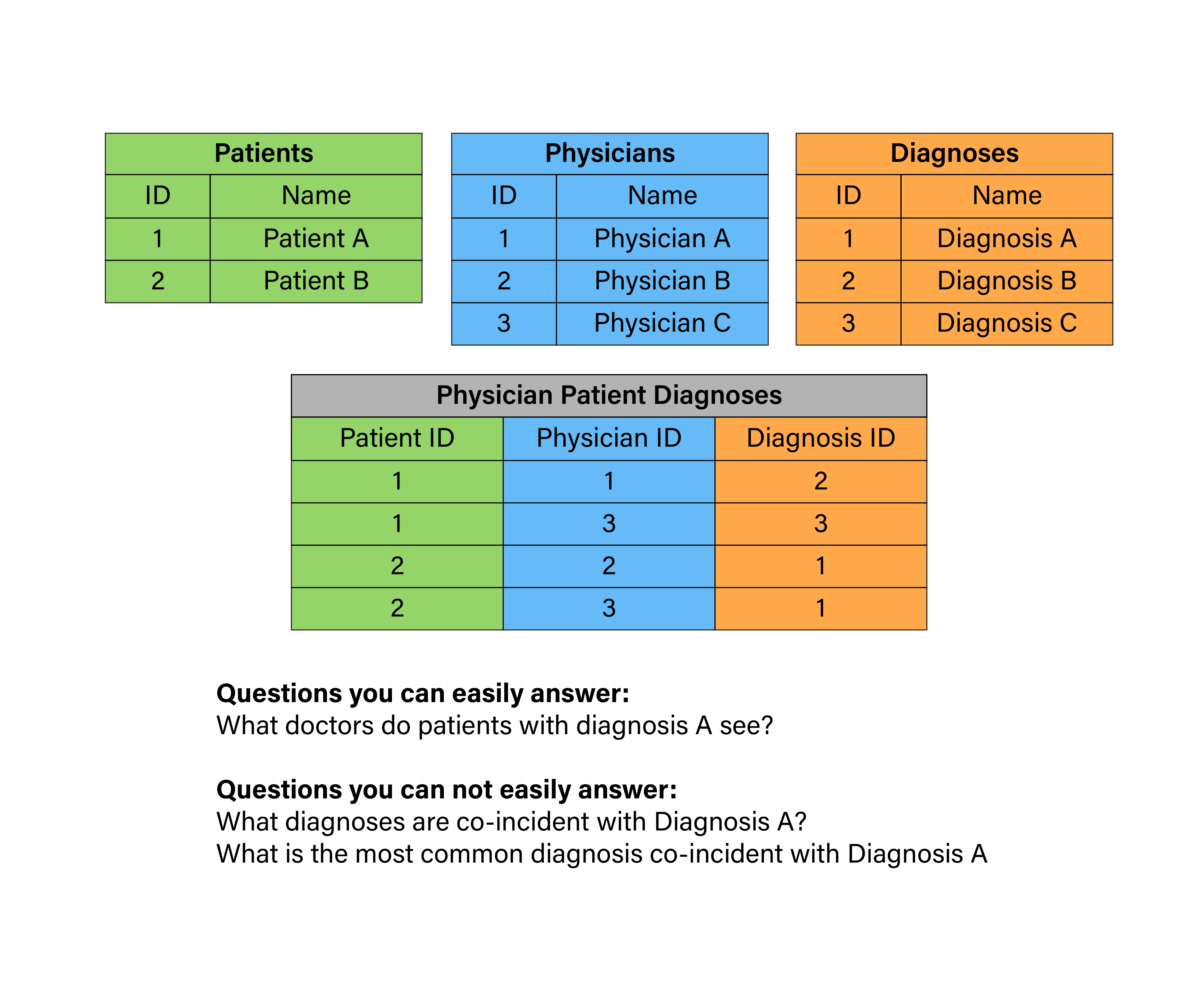Healthcare is complicated, especially when you consider the massive amount of data generated every day by patients, providers, insurance companies, and regulators. This data can tell us a lot, especially if the relationships between sets of data can be used in a meaningful way. Some of healthcare's most complex issues such as implementing precision medicine, consolidating personal health data, and detecting fraud can benefit from understanding the relationships between data sets. A graph database is a computational tool that allows visualization of the most complex relationships that would otherwise be incredibly hard to map out. So how does it work?
First let's look at a database that has been widely used throughout healthcare, the relational database. The format is like a table or spreadsheet; data is presented in rows and columns. Typically each row is a record and the columns contain attributes of the record. Filters are used to search within the database. These make it useful for creating simple comparisons, for example, reporting the average number of medications prescribed to patients over age 65. While it is useful for many cases, it is inflexible when it comes to making comparisons with a large number of relationships. For example, to see the relationship between multiple patients and their diagnoses from multiple providers, one would need to build a set of complex queries.

Alternately, graph databases use objects and relationships to create a representation of how the data is connected. Data is presented primarily in a visual graph rather than a table of numbers. This is beneficial for complicated sets of data because humans respond to visual data representations much faster than text or numerical data. This makes graph databases ideal for solving problems where data and variables come from multiple sources that have many relationships.

As we see from the example, we can find how relationships between diagnoses can lead to solutions that are more easily seen in a graph database. This can be applied to cancer treatment and prevention, which can be improved by seeing relationships between different combinations of treatments and their outcomes. By adding more attributes such as demographics, patient history, and genetic information, precision medicine can be used to treat patients more effectively for a variety of diseases. Another area that could benefit is fraud detection. Abnormalities in the relationships between patients, claims, and providers can be more easily seen with a graph database making it easier to pinpoint errant charges.
Graph databases will bring a better understanding of data relationships to the benefit of healthcare, improving outcomes and reducing costs. This basic overview is just a start. We will dive deeper into specific use cases in future posts.